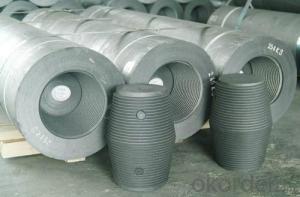Graphite carbon electrodes are the unsung heroes of many industrial processes. They don’t get the glamour of the shiny new tech, but without them, a lot of the things we take for granted wouldn’t be possible. These electrodes are made from graphite, a form of carbon that’s known for its strength and conductivity. They’re versatile, reliable, and have a wide range of applications that you might not even realize.
Imagine for a moment the process of making steel. It’s a complex and energy-intensive process, but graphite carbon electrodes play a crucial role. They’re used in electric arc furnaces to melt scrap metal and transform it into new steel. The heat generated by these electrodes is intense, and it’s what makes this process possible. Without them, we wouldn’t have the steel we need for buildings, bridges, and countless other structures.
But it’s not just steel production where these electrodes shine. They’re also used in the production of aluminum, another metal that’s essential to modern life. In the Hall-Heroult process, graphite electrodes are submerged in a bath of molten cryolite, and it’s their electrical conductivity that helps to extract aluminum from its ore. It’s a fascinating process, and one that wouldn’t be possible without the use of these electrodes.
Another area where graphite carbon electrodes are making a difference is in the production of synthetic diamonds. Yes, you read that right – synthetic diamonds. These aren’t just for jewelry; they have a wide range of industrial applications, from cutting tools to abrasives. And the process of creating them involves high pressure and high temperature, which is where these electrodes come in. They’re used to generate the heat and pressure needed to create these gems.
But let’s not forget about the environmental benefits of these electrodes. They’re not just useful in production processes; they’re also helping to reduce emissions and improve sustainability. For example, in electric vehicles, graphite electrodes are used in the batteries that power these cars. This is a cleaner alternative to fossil fuels, and it’s helping to reduce our carbon footprint.
And what about the future? The potential for graphite carbon electrodes is vast. As technology advances, we’re likely to see even more applications for these versatile tools. Whether it’s in energy storage, or new methods of metal production, the possibilities are endless.
So the next time you drive past a steel mill or see a shiny new electric car, remember the humble graphite carbon electrode. It’s not the most glamorous part of the process, but it’s an essential one. These electrodes are the workhorses of industry, and they deserve a little recognition for all they do.

